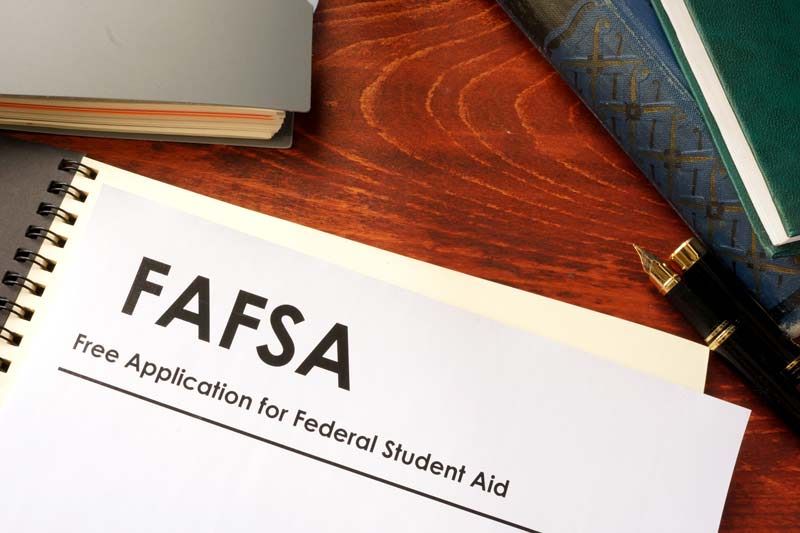How FAFSA Can Help Your Pay for College: A Guide for High School Juniors and Seniors

As you approach the college application process, one of the most crucial steps is understanding how to finance it. Navigating the costs of college can feel daunting, but there’s a simple way to access financial support: FAFSA. The Free Application for Federal Student Aid (FAFSA) is the first step in securing grants, scholarships, and loans that can significantly reduce the cost of your education. Here’s a breakdown of how FAFSA works and how to make it work for you.
What is FAFSA?
FAFSA is the form used by the U.S. Department of Education to determine your eligibility for financial aid. It’s essential for qualifying for federal grants (free money), loans, and work-study programs. Additionally, many colleges utilize the FAFSA to distribute their own scholarships and grants. FAFSA is important for more than just loans. It can help you secure free money for college and affordable options for paying for your education.
Why You Need to Complete FAFSA:
If you’re planning to attend college, FAFSA is the ticket to a variety of financial aid opportunities. Here’s why it matters:
- Grants and Scholarships: FAFSA is how you apply for federal grants, such as the Pell Grant, which provides free money for college. Many colleges also offer institutional scholarships based on your FAFSA, reducing your tuition costs.
- Student Loans: While loans need to be repaid, FAFSA is your pathway to federal student loans, which typically offer lower interest rates and better repayment options than private loans.
- State Aid: Many states also use FAFSA to distribute state-specific financial aid. Some state aid programs require it to qualify for grants, scholarships, and other financial assistance.
- Some Scholarships Require FAFSA: Even if you’re looking at external scholarships, many private scholarships require you to complete FAFSA as part of the application process to prove financial need.

Steps to Fill Out FAFSA:
- Gather Your Documents: Before you start, make sure you have your Social Security number, income information, and your parents’ tax forms (if you’re considered a dependent). Being organized will make the process smoother.
- Create Your FSA ID: The FSA ID is your electronic signature for FAFSA. You’ll need it to sign your form and submit it online.
- Complete the FAFSA Form: Head to the official FAFSA website (https://studentaid.gov) and begin the application. It’s mostly straightforward, asking for basic information about your family’s income and assets. Take your time with each section, as accurate data is essential.
- Submit the FAFSA: Once you’ve completed the form, submit it online. Be sure to list every school you’re interested in so they can access your financial information.
- Review Your Student Aid Report (SAR): After you submit your FAFSA, you’ll receive a SAR, which summarizes your information. It’s essential to review it for any mistakes or discrepancies.
What You Might Not Know About FAFSA:
- Your Dependency Status Affects Your Application: If you’re under 24 and don’t meet certain criteria (such as being married or a military veteran), you’ll need to provide your parents’ financial information. If you’re unsure whether you’re considered a dependent or independent student, check with your school’s office of financial assistance—they can help clarify things.
- FAFSA Is Free: Don’t pay anyone to help you fill out your FAFSA. There are no fees for submitting the form, and plenty of resources are available online for free assistance. Stick to the official website—https://studentaid.gov—and avoid third-party services that charge you.
- Submitting Early Can Benefit You: FAFSA opens on October 1st each year, and it’s important to complete it as soon as possible. Some forms of financial aid are awarded on a first-come, first-served basis, so applying early can improve your chances of receiving more aid.
- You Can Apply Before You’re Accepted: You don’t need to wait until you’re accepted into a college to submit your FAFSA. As soon as you know which schools you’re interested in, fill out the form.
- State and School Deadlines Vary: While the federal FAFSA deadline is essential, don’t forget that many schools and states have earlier deadlines for financial aid. Be sure to check with the schools you’re applying to so you don’t miss out on any opportunities.
After You Submit FAFSA:
Once you’ve submitted your FAFSA, the colleges you’ve listed will use the information to create your financial aid package. You’ll receive an award letter from each school, which will detail the financial aid you qualify for, including grants, loans, work-study, and possibly scholarships. Take the time to compare the offers, and if you have any questions about what’s included, contact the financial aid office at each school for clarification.
Common FAFSA Mistakes to Avoid:
-
- Missing or Incorrect Information: Double-check everything. Minor errors in your financial data can delay your application or reduce the amount of aid you receive.
-
- Not Updating Your FAFSA: If there’s a change in your family’s financial situation, update your FAFSA. For example, if your parent loses a job or there’s a significant change in your family’s income, this can make you eligible for more aid.
-
- Skipping State-Specific Deadlines: Many states have early deadlines for state grants and scholarships. Be sure to stay aware of these deadlines to avoid missing out on additional aid.
- Skipping State-Specific Deadlines: Many states have early deadlines for state grants and scholarships. Be sure to stay aware of these deadlines to avoid missing out on additional aid.
Maximizing Your FAFSA Experience:
Completing FAFSA is one of the most critical steps in securing financial support for your college education. By submitting the form early and accurately, you’re opening the door to a range of financial aid options that will make your college experience more affordable. If you have any questions or need help, don’t hesitate to reach out to your school’s financial aid office. They’re there to help you through the process.
Ready to get started?
Visit https://studentaid.gov and take the first step toward securing the financial aid that can help make your college dreams a reality.
